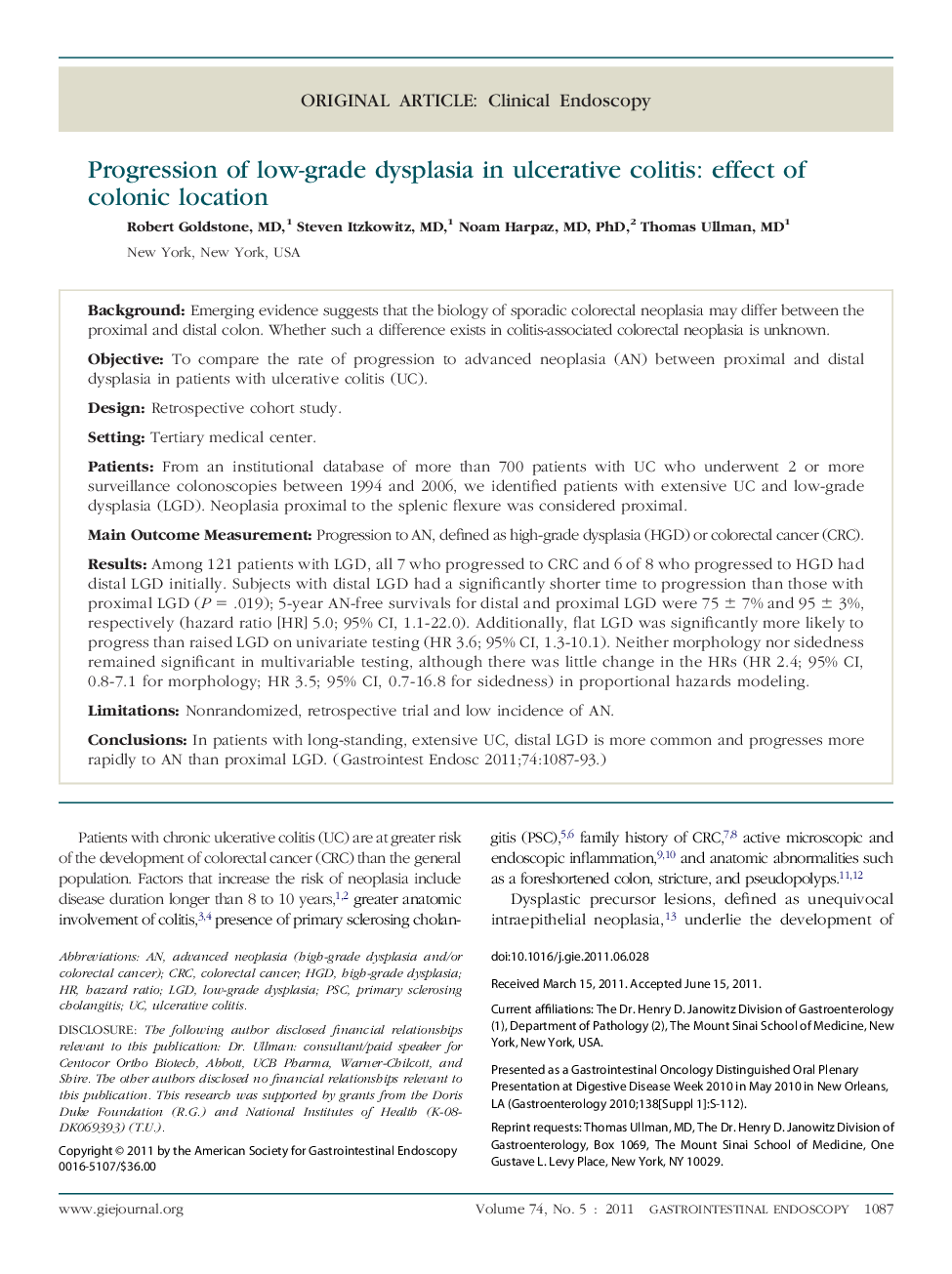| Article ID | Journal | Published Year | Pages | File Type |
|---|---|---|---|---|
| 3305366 | Gastrointestinal Endoscopy | 2011 | 7 Pages |
BackgroundEmerging evidence suggests that the biology of sporadic colorectal neoplasia may differ between the proximal and distal colon. Whether such a difference exists in colitis-associated colorectal neoplasia is unknown.ObjectiveTo compare the rate of progression to advanced neoplasia (AN) between proximal and distal dysplasia in patients with ulcerative colitis (UC).DesignRetrospective cohort study.SettingTertiary medical center.PatientsFrom an institutional database of more than 700 patients with UC who underwent 2 or more surveillance colonoscopies between 1994 and 2006, we identified patients with extensive UC and low-grade dysplasia (LGD). Neoplasia proximal to the splenic flexure was considered proximal.Main Outcome MeasurementProgression to AN, defined as high-grade dysplasia (HGD) or colorectal cancer (CRC).ResultsAmong 121 patients with LGD, all 7 who progressed to CRC and 6 of 8 who progressed to HGD had distal LGD initially. Subjects with distal LGD had a significantly shorter time to progression than those with proximal LGD (P = .019); 5-year AN-free survivals for distal and proximal LGD were 75 ± 7% and 95 ± 3%, respectively (hazard ratio [HR] 5.0; 95% CI, 1.1-22.0). Additionally, flat LGD was significantly more likely to progress than raised LGD on univariate testing (HR 3.6; 95% CI, 1.3-10.1). Neither morphology nor sidedness remained significant in multivariable testing, although there was little change in the HRs (HR 2.4; 95% CI, 0.8-7.1 for morphology; HR 3.5; 95% CI, 0.7-16.8 for sidedness) in proportional hazards modeling.LimitationsNonrandomized, retrospective trial and low incidence of AN.ConclusionsIn patients with long-standing, extensive UC, distal LGD is more common and progresses more rapidly to AN than proximal LGD.
